Batteries Storing Power Seen as Big as Rooftop Solar in 12 Years
This article by Anna Hirtenstein for Bloomberg may be of interest to subscribers. Here is a section:
The spread of electric cars is driving up demand for lithium-ion batteries, the main technology for storage devices that are attached to utility grids and rooftop solar units.
That’s allowing manufactures to scale up production and slash costs. BNEF expects the technology to cost $120 a kilowatt-hour by 2030 compared with more than $300 now and $1,000 in 2010.
That would help grid managers solve the intermittency problem that comes with renewables -- wind and solar plants don’t work in calm weather or at night, creating a need for baseload supplies to fill the gaps. Today, that’s done by natural gas and coal plants, but the role could eventually be passed
to power-storage units.The researcher estimates 35 percent of all light vehicles sold will be electric in 2040, equivalent to 41 million cars.
That’s about 90 times the figure in 2015. Investment in renewables is expected to rise to $7.8 trillion by then, compared with $2.1 trillion going into fossil-fuel generation.
“The battery industry today is driven by consumer products like computers and mobile phones,” said Claire Curry, an analyst at Bloomberg New Energy Finance in New York. “Electric vehicles will be the driver of battery technology change, and that will drive down costs significantly.”
The industry still has a long way to go. About 95 percent of the world’s grid-connected energy storage today is still pumped hydro, according to the U.S. Energy Department. That’s when surplus energy is used to shift large amounts of water uphill to a reservoir so it can be used to produce electricity later at a hydropower plant. The technology only works in areas with specific topographies.
There are several larger-scale battery projects in the works, according to S&P Global. They include a 90-megawatt system in Germany being built by Essen-based STEAG Energy Services GmbH and Edison International’s 100-megawatt facility in Long Beach, California.
“Utility-scale storage is the new emerging market for batteries, kind of where electric vehicles were five years ago,” said Simon Moores, managing director at Benchmark Mineral Intelligence, a battery researcher based in London. “EVs are now coming of age.”
Innovation in the chemistry that supports batteries has been a lot more difficult to achieve than the Moore’s law related enhancements that have been commonplace in chip manufacturing and increasingly in solar technologies. Nevertheless as the requirement for storage grows increasingly urgent, the capital expended on R&D is expanding and innovations are being achieved. In the meantime economies of scale through larger manufacturing plants are helping to drive efficiencies.
I reviewed a number of utility scale battery manufacturers on May 1st 2015 and thought it might be an opportune time to revisit the sector not least because there are some clear winners and losers.
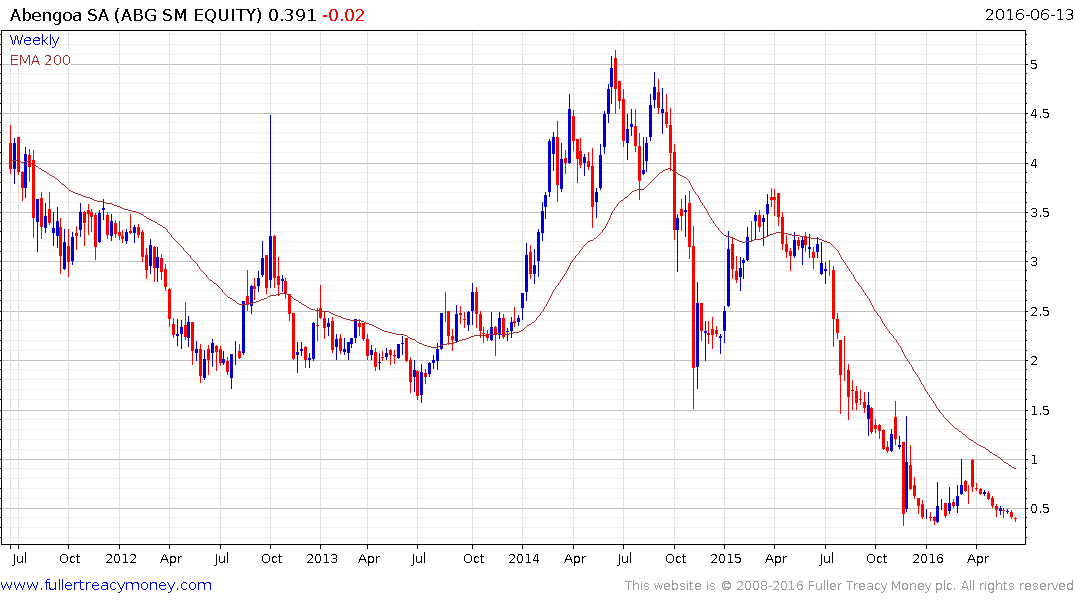
Abengoa has lost 90% of its value over the last year and is now retesting its December lows. A clear upward dynamic will be required to signal support in this area.
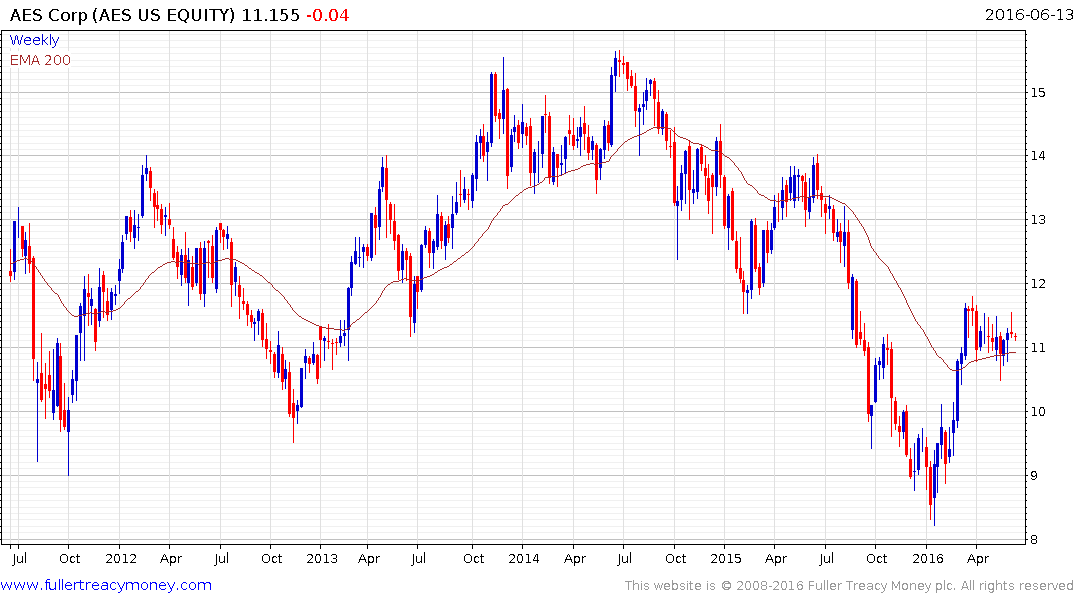
AES Corp has been ranging mostly above the 200-day MA since rebounding from the February lows. It needs to hold the low near $10.50 if potential for additional higher to lateral ranging is to be given the benefit of the doubt.
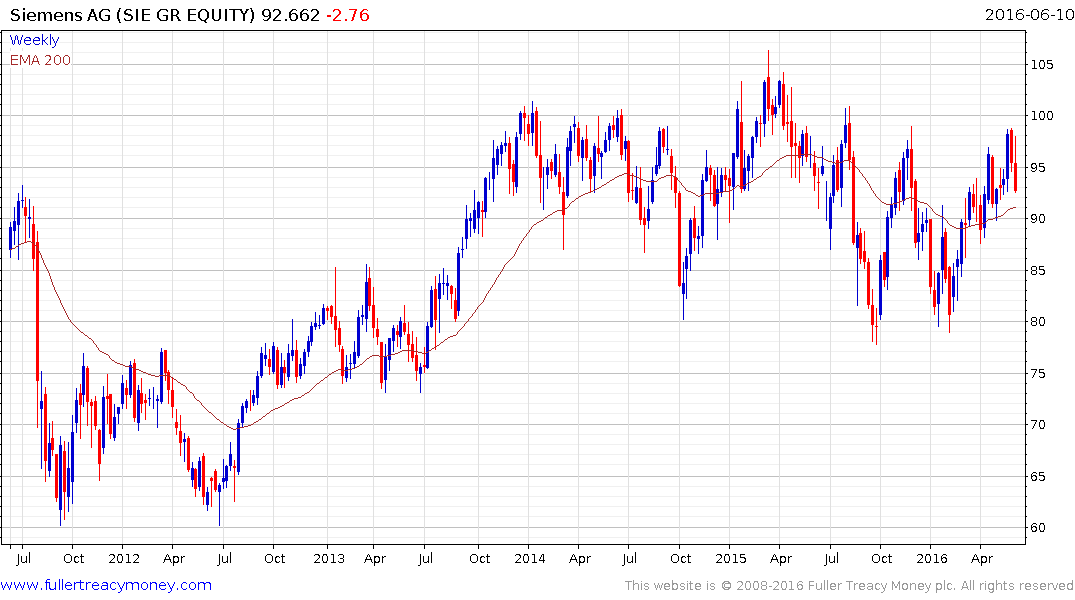
Siemens remains in a more than two-year congestion area trading range and is currently retreating from the most recent test of the upper side near €100.
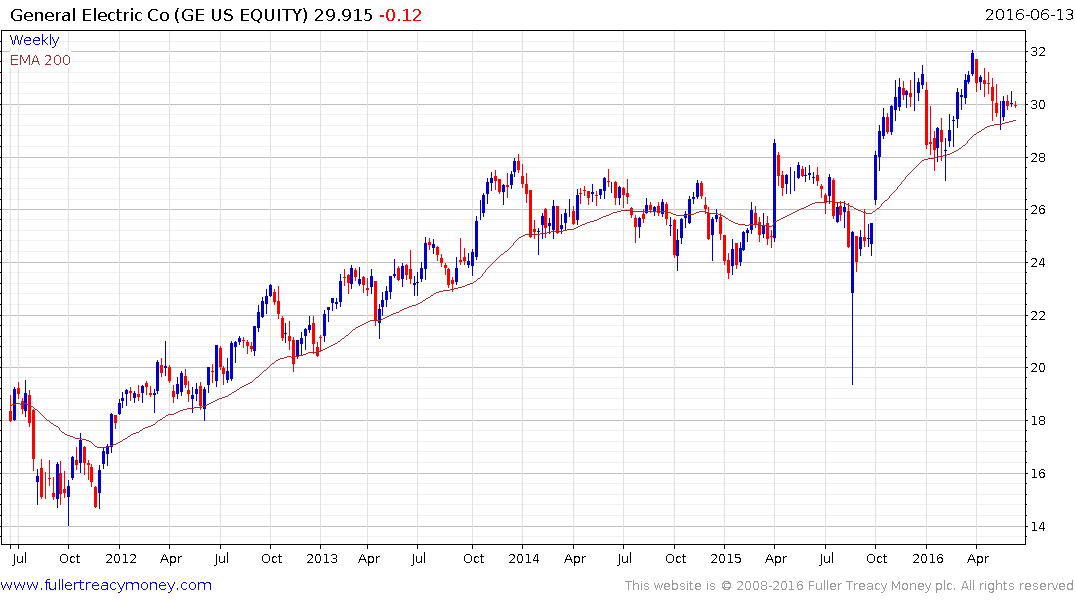
General Electric continues to find support in the region of the trend mean and a sustained move below it would be required to question the medium-term upward bias.
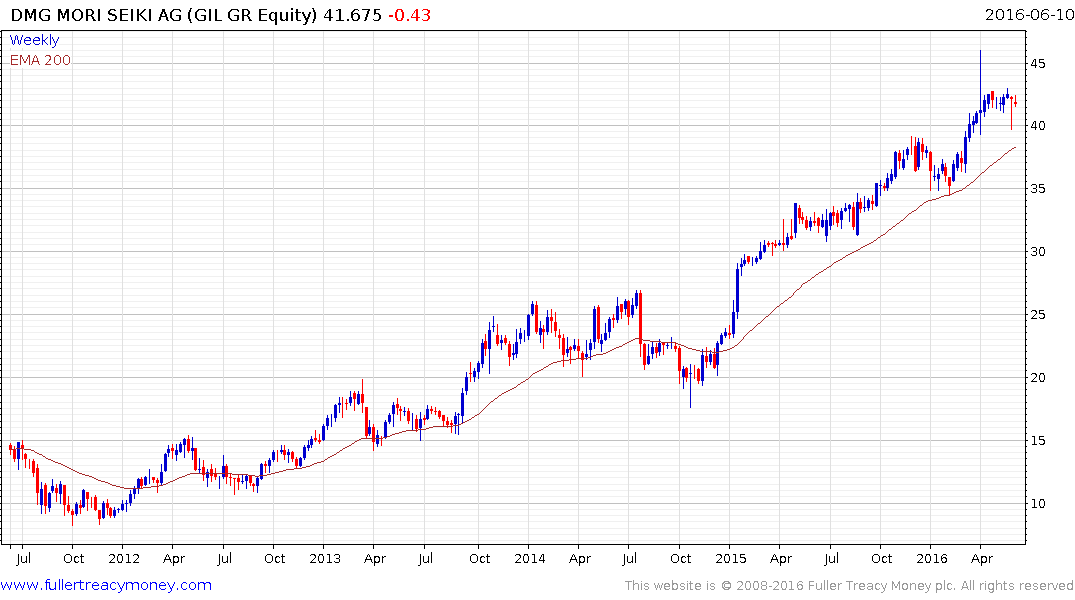
DMG Mori Aktiengesellschaft remains in a reasonably consistent medium-term uptrend and a sustained move below the trend mean would be required to question that view.
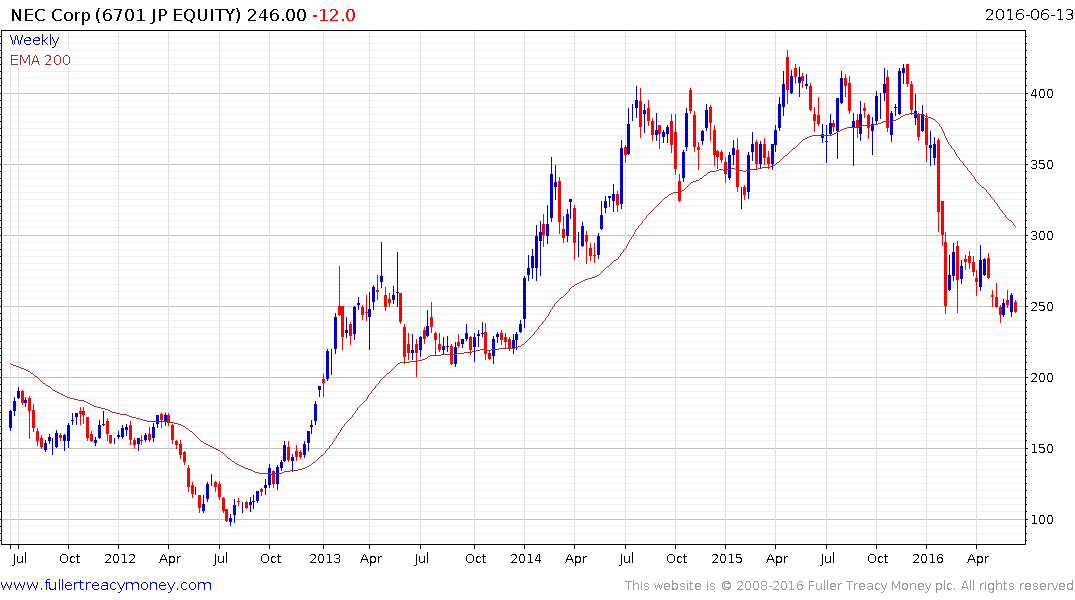
NEC Corp failed to sustain the move to new highs in May of last year and dropped down from a Type-3 top in January. It is currently testing its lows and will need to hold near ¥250 if support building is to given the benefit of the doubt.
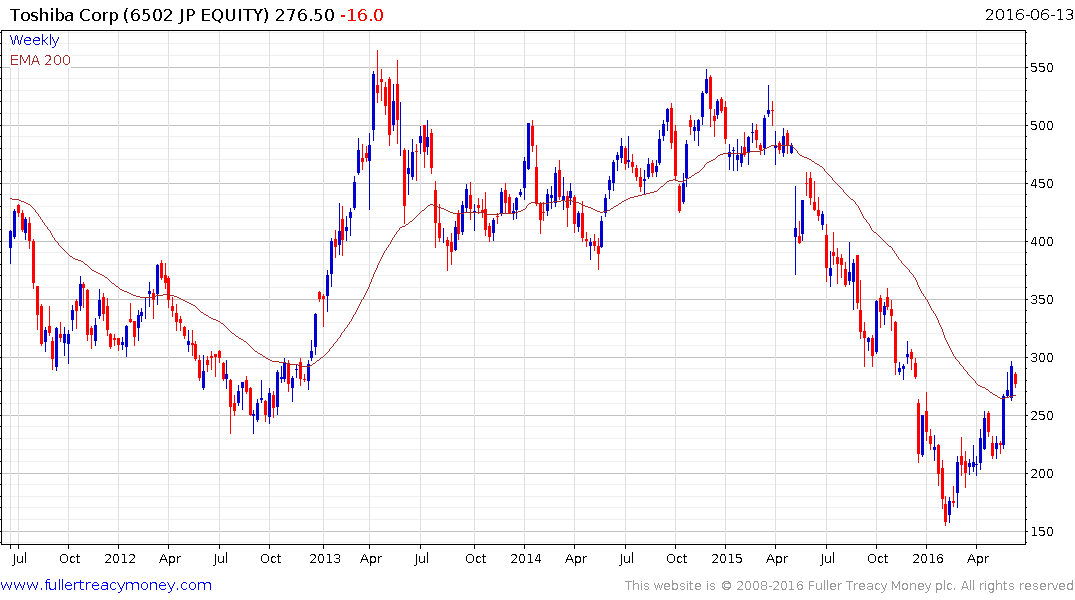
Toshiba Corp has rebounded impressively from the ¥150 area but some consolidation of that gain is looking increasingly likely.
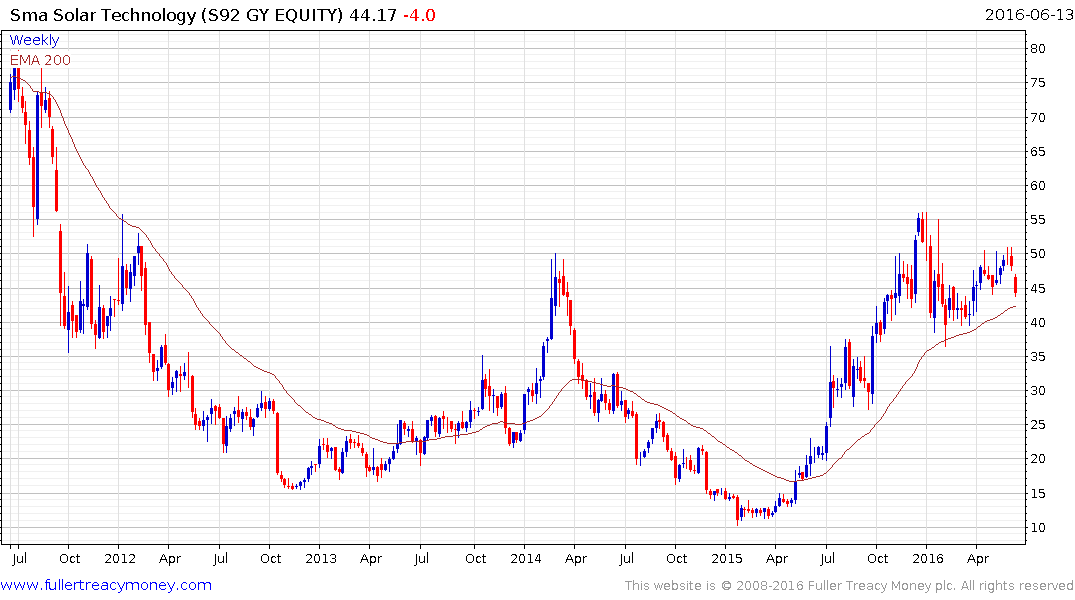
SMA Solar Technologies jumped from €10 to almost €60 between early 2015 and January. It has been consolidating the move since and will need to hold the region of the trend mean, currently near €42, if potential for higher to lateral ranging is to be given the benefit of the doubt.
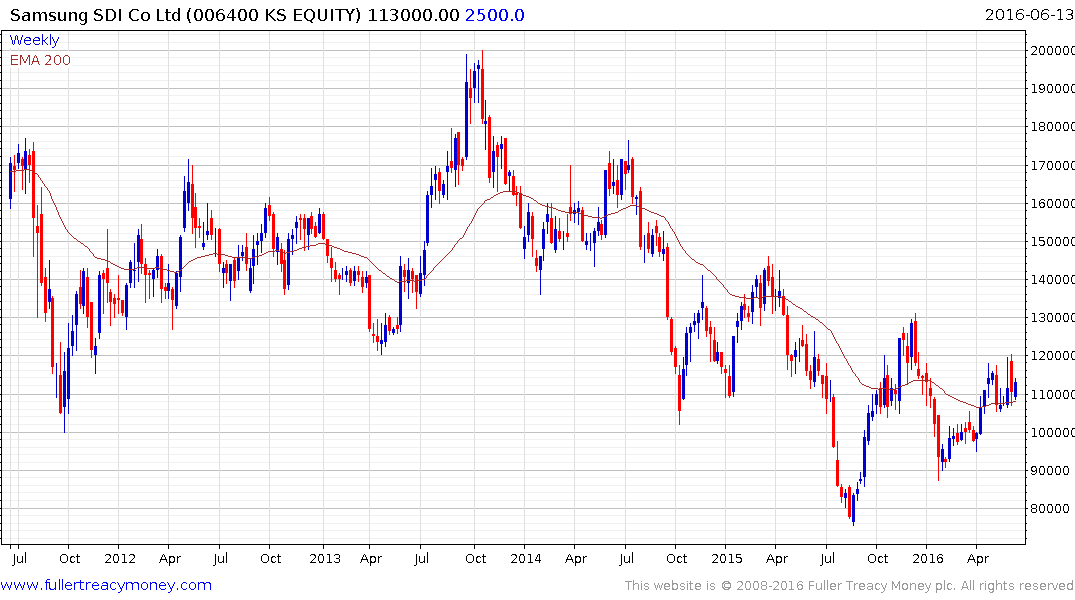
Samsung SDI has been ranging mostly above the 200-day MA since March and a sustained above KRW120,000 would break the medium-term progression of lower rally highs.
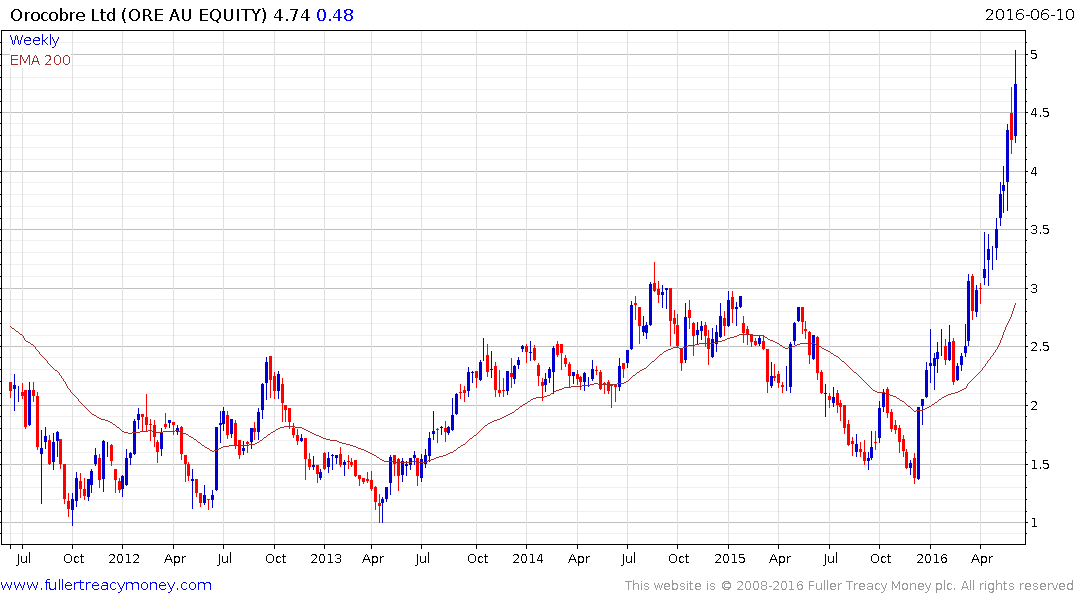
Meanwhile the lithium sector has been surging on a supply inelasticity meets rising demand based argument. Orocobre for example remains in a steep uptrend and a break in the progression of higher reaction lows would be required to check momentum beyond a brief pause.


